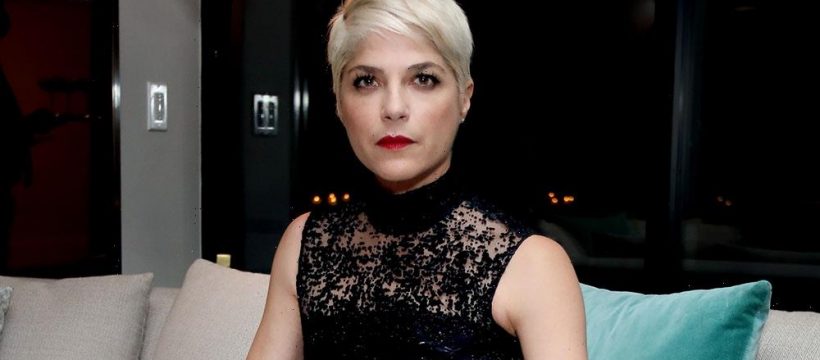Storytelling is powerful. Stories can ultimately shape your identity and how the world sees you.
Throughout my life, my story has been told by other people: Manic depressive. Drunk. Mean.
In my memoir, “Mean Baby,” I wrote about never feeling a sense of belonging. Throughout my life, I often felt disconnected from my body, out of control, as if I didn’t belong in my own skin. I learned not to show or talk about pain because I didn’t want it to define me, nor did I understand what my pain meant.
In 2018, I was finally able to tell other people how I identified myself: disabled. I was diagnosed with multiple sclerosis (MS) and learned it had been attacking my central nervous system for years. Growing up, I didn’t have anyone in the entertainment industry to look up to who had a disability or was open about their diagnosis, and I didn’t see my experiences reflected in the stories being told on screen. Even though it was difficult learning I had MS, at least it had a name now. After being confused about who I was for so long, I finally understood myself — and I belonged to a community. In a way, it was also freeing.
I started thinking more about the power of storytelling and why representation in media matters. If I had seen and heard from people who were like me, maybe I wouldn’t have felt so alone. Perhaps if I’d had more diverse representation to look up to, I would have learned about my own diagnosis earlier on (I was shocked when I learned one of my idols, Joan Didion, also had MS).
Now I truly feel comfortable embracing all parts of my identity, including my disability — and I’ve realized it’s time we shift the story about how disabled people are represented. It’s one of the reasons I started looking at the work Google has been doing to build inclusive practices into its marketing. United by shared values and a vision that authentically represents disabled people’s stories, I want to help the rest of the creative industry use Google’s learnings to build a world where everyone belongs.
Our stories, our voices
Since my diagnosis, I’ve been lucky to become close friends with Andraéa LaVant, a leading voice in the disability community and have learned so much from her wisdom. One of the core principles from the disability community that she’s taught me is “nothing about us without us.” Who better to build a strong sense of belonging for disabled people than we who belong to the community?
For too long, creators have told our stories without our genuine involvement. It never works. Our experience is ours alone. That’s why it’s important to pull in as many people and experts from the disability community as possible.
Intersectional representation
While I want to use my voice to support the disability community, I also strongly believe that I can’t be the only spokesperson for everyone with a disability. Our experience is ours alone. That’s why it’s important to pull in as many people and experts from the community as possible.
In addition to Andraéa and her team, Google has worked with Disability:IN, GLAAD, Geena Davis Institute on Gender in Media, AdCouncil, Cannes Lions, and many other organizations globally to create All In, a toolkit to help build more inclusive and accessible media.
This level of collaboration creates space for the more than 1 billion disabled people around the world. It also acknowledges that each person has a unique background and set of circumstances. My disability is just one identity and my experience is just that — one person’s experience. Disability will touch everyone at some point in their life, whether permanent, temporary, visible, invisible, or age-related. Partnering with diverse experts and perspectives also emphasizes the opportunity to consider people’s whole identity such as gender, race or ethnicity, sexual orientation, age, and education.
Tear down limitations to build belonging
This matters beyond advertising, All In’s original focus. There is a movement happening and the entertainment industry needs to be a part of this cultural shift. Everyone benefits from accessibility because it opens up work to a wider, more diverse audience.
I’ve already learned a lot through the accessible marketing playbook on All In — it would have been a helpful resource while I was writing “Mean Baby.” For example, throughout my memoir I described people as “wheelchair-bound” or “in a wheelchair.” The playbook suggests that a more inclusive description would be “wheelchair user” or “someone who uses a wheelchair.” This is a great example of something that may seem small, yet is so impactful.
All In also taught me that disability inclusion is a mindset, not a box to check. It requires a sustained commitment, a constantly evolving work process, and ongoing learning for each and every one of us. This is important for us to remember if we’re to make meaningful change.
In “Mean Baby,” I write that the thing about limitations is that they aren’t really about you at all. They’re often constructed by others, and when they’re removed, you realize that all this time you’ve been capable of soaring.
The entertainment industry has the ability to do so much to help tear down these limitations. Committing to accessibility breaks down barriers, enabling creatives to be better in their work. It’s time for the wider creative media industry to commit to inclusion and elevate the significance of this growing cultural shift. Everyone deserves to have their story represented authentically and feel a sense of belonging.
Whether you’re a producer, creator, marketer, or actor, commit to helping change the creative industry to be more inclusive today.
Source: Read Full Article
